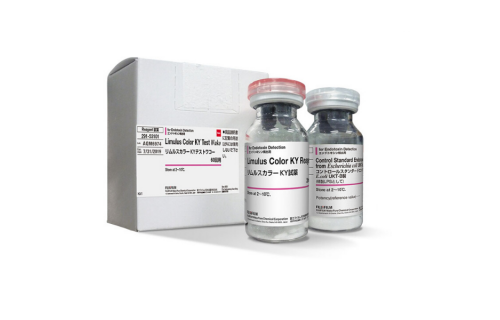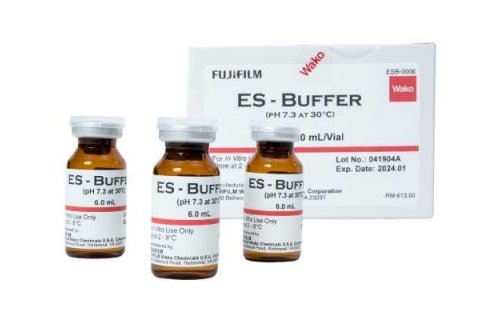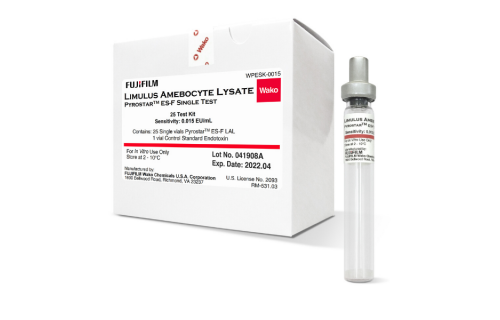Selecting the correct testing method and sensitivity for endotoxin detection
Risks associated with endotoxin exposure
Endotoxins are pyrogens and a key component of the outer membrane of gram-negative bacteria. If administered parenterally, products contaminated with endotoxins may lead to severe consequences, including inflammation, hemorrhage, septic shock, and even death.1 Endotoxins are ubiquitously present in the environment, and injectable pharmaceuticals and medical devices, as well as the raw materials they are produced from, should be tested for endotoxin contamination. Several groups of methods for endotoxin testing have been developed to address this need.2
Tests for endotoxin or pyrogen detection
Rabbit pyrogen test
The rabbit pyrogen test was historically one of the first methods developed to detect pyrogens.2 It is an in vivo test based on the fact that the parenteral administration of pyrogens induces increased temperature/fever in rabbits. However, the rabbit pyrogen test is not specific to endotoxins, because a temperature increase is elicited not only by endotoxins but by all pyrogens.
Limulus amebocyte lysate (LAL) assay
The in vitro LAL assay is the most widely used endotoxin test that has largely replaced the rabbit pyrogen test.2 The LAL assay is sensitive and specific. It uses the LAL reagent isolated from amebocytes of the Atlantic horseshoe crab (Limulus polyphemus), which forms a clot when incubated with an endotoxin. The LAL assay can be performed as a gel-clot, chromogenic, or turbidimetric test.
Gel-clot LAL assay
The qualitative LAL gel-clot assay is the standard LAL test. It relies on the interaction of pro-clotting enzymes in the LAL with endotoxins, activating a coagulation cascade, modifying the amebocyte coagulogen, and forming a gel clot. Clot formation is then detected visually. The LAL assay is both sensitive and easy-to-use but may be time-consuming, if a high number of samples need to be assessed.
Turbidimetric LAL assay
The quantitative turbidimetric LAL method relies on the formation of turbidity (cloudiness) after enzymatic substrate cleavage and prior to gel formation. Higher endotoxin levels lead to a faster increase in turbidity, which can be quantified using a spectrophotometer or microplate reader. The turbidimetric LAL assay is also sensitive and reliable but enables data quantification and high-throughput analysis.
Chromogenic LAL assay
The chromogenic LAL method represents a modification of the gel-clot reaction. It is based on the cleavage of a chromogenic substrate, chromogen release, and colorimetric reaction visualization. The chromogenic LAL assay enables highly sensitive, quantitative, and automated LAL measurements and can also be scaled up for high-throughput analysis.
Other methods for endotoxin and pyrogen detection
Monocyte activation test
The monocyte activation test (MAT) was developed as an in vitro pyrogen test.2 It relies on the isolation of monocytes from peripheral human blood and their incubation with a sample analyzed for pyrogen content. If the sample is contaminated with pyrogens, it stimulates the monocytes to release inflammatory cytokines, which can be quantified using an enzyme-linked immunosorbent assay (ELISA). The monocyte activation test is a reliable in vitro assay for pyrogen detection. However, it detects all pyrogens and not only endotoxins.
Recombinant factor C-based assays
Recombinant factor C has also been used for the development of endotoxin assays. Factor C is the initial component of the horseshoe crab clotting cascade, which is induced by endotoxins. Recombinant factor C-based assays rely on the principle of the LAL test but avoid the use of horseshoe crab amebocytes by employing recombinant factor C.2
Development of biosensors for endotoxin detection
Biosensors, based onendotoxin affinity components,are being developedas endotoxin detection methods independent of the LAL enzymatic reaction. However, the standardization and broad application of these novel approaches still face significant challenges.3
Considerations for endotoxin test selection
The LAL assay has largely replaced the rabbit pyrogen test as the standard test for endotoxin detection. It is reliable and sensitive and can be conducted as a gel-clot, turbidimetric, or chromogenic assay. However, the selection of the most appropriate test for endotoxin detection depends on a number of factors, including the available equipment, number and characteristics of the samples that need to be evaluated, and, in certain instances, relevant regulatory requirements.2
Literature sources:
- Farhana A, Khan YS. Biochemistry, Lipopolysaccharide. [Updated 2021 Apr 29]. In: StatPearls [Internet]. Treasure Island (FL): StatPearls Publishing; 2022 Jan-. Available from: https://www.ncbi.nlm.nih.gov/books/NBK554414/.
- Suvarna, K. Endotoxin detection methods – Where are we now?American Pharmaceutical Review. 2015, August 25.
- Su W, Ding X. Methods of endotoxin detection.Journal of Laboratory Automation. 2015 Aug;20(4):354–364.






